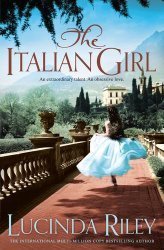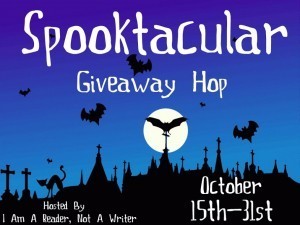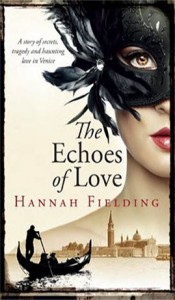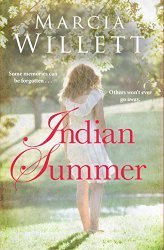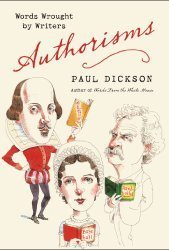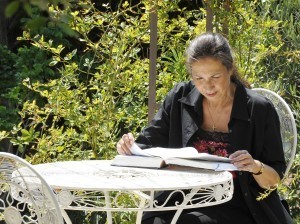Hannah Fielding's Blog, page 95
October 14, 2014
The Italian Girl by Lucinda Riley
From the blurb:
Nothing sings as sweetly as love, or burns quite like betrayal
Rosanna Menici is just a girl when she meets Roberto Rossini, the man who will change her life. In the years to come, their destinies are bound together by their extraordinary talents as opera singers and by their enduring but obsessive love for each other – a love that will ultimately affect the lives of all those closest to them. For, as Rosanna slowly discovers, their unison is haunted by irreversible events from the past . . .
Rosanna’s journey takes her from humble beginnings in the back streets of Naples to the glittering stages of the world’s most prestigious opera houses. Set against a memorable backdrop of Lucinda Riley’s trademark evocative locations, The Italian Girl unfolds into a poignant and unforgettable tale of love, betrayal and self-discovery.
This is exactly my kind of book – full of emotion and passion and hearts aching with need. The relationship between Roberto and Rosanna had me utterly gripped throughout, as I swung between wishing they would find a happy-ever-after together, and feeling unsettled by the obsessive quality of their love. I loved the honesty of this conflict – that the protagonists are flawed; that their love is not perfect.
But while Roberto and Rosanna are the focal point of the book, there are so many other poignant stories interwoven through the narrative – the pious man torn between his love for God and his love for a woman; the gentle and honourable soul who longs for Rosanna in the background; the aging father, wanting to hold on to his children; the desperate mistress and the depths to which she will go to manipulate and control; and for me, most moving of all, the mother who must let go of her daughter, and the daughter who never knew her father. I can’t tell you how many times I had tears in my eyes as I read, and how many cups of tea went cold, so lost did I get in the story!
I love the settings for the book – Naples and London – and how the author describes them so vividly I felt I was there. But most of all I love the importance of opera throughout the story. As I read, I felt I could almost hear Roberto and Rosanna sing, could picture them on the greatest stages of the world, bringing the audience to their feet. I so love opera for its drama and ability to stir emotion, and I think in this book Lucinda Riley has managed to create an opera on paper. Heavenly!
The writing style is exquisite – realistic dialogue, beautiful descriptions and just the right measure of pace, slow enough to allow the reader to really comprehend the characters and their emotions, but fluid enough to make me keep wanting to turn the pages. I especially love how the author’s use of the third-person narrator allows the reader free access to the story from all characters’ perspectives, so we are all-knowing and can make connections that the individual characters cannot. That means being privy to explosive secrets, and I spent a good part of the book questioning in my own heart whether I thought such secrets were best left alone or exposed, to the point that I was relieved when the author made the decision for me!
In all, this is a captivating, beautifully written, moving book. Romance as it should be written. Sheer bliss in the reading.
The Italian Girl is available now from Amazon; click on the book cover below to visit the store.
5th Annual Spooktacular Giveaway Hop: October 15th to 31st
Today I’m delighted to be participating in the fifth annual Spooktacular Giveaway Hop run by I Am a Reader, Not a Writer. I’m giving away a paperback copy of my passionate romance novel The Echoes of Love, set in Venice, Italy:
To enter, simply comment on this blog telling me what you find romantic about the Spooktacular season. Don’t forget to let me know your email address, so I can contact you if you win!
And when you’ve done that, hop over to the next giveaway in the Spooktacular Giveaway Hop.
October 9, 2014
Venice: The ultimate wedding destination
How many women, since he first found fame on ER, have fantasised about marrying George Clooney? Well, it was British-Lebanese human rights lawyer AmalAlamuddin who finally had the honour last week. And the location for the most high-profile wedding since William and Kate? Venice.
The wedding festivities, which spanned a weekend, were spread across Venetian landmarks I remember well from my visits to the city.
The Belmond Hotel Cipriani: A luxury hotel on the island of Giudecca, opened in 1958 by Giuseppe Cipriani, of Harry’s Bar and the Bellini cocktail fame. Its website proclaims: “Venice: a glorious, theatrical experience that touches all the senses. And if Venice is a theatre, the Belmond Hotel Cipriani is the Royal Box.”
The Aman Canal Grande Venice:A seven-star resort within the 450-year-old Palazzo Papadopoli, where the couple were married by Walter Veltroni, the former mayor of Rome, on the seafront at sunset under an arch of white roses.
The couple and their guests travelled by boat on the canals to events, creating an exciting spectacle for onlookers (and something of a challenge for women disembarking in tight dresses and high heels!). Here’s a glimpse of George en route to the ceremony:
Of course, Venice was the obvious choice as a sublimely romantic setting – that is why I situated my novel The Echoes of Love there. But it was a brave choice, for it’s hardly a secluded and private destination. And the price tag was certainly a heft one, reported to be $8 million.
Of the many people celebrating the wedding in the city – from the bride and groom’s family and friends to the many fans who flocked to the city– certainly the tourist office was abuzz. Media reports suggest that international coverage of the wedding drove up hotel prices in the city by more than 20 per cent last week, and the increase in visitors is sure to continue with the world’s former most eligible bachelor having secured Venice’s reputation as the city of love. Already several companies specialise in Venice-based weddings for romantics, and no doubt these will do very well from the Clooney connection.
The wedding got me thinking about Venetia and Paolo in The Echoes of Love. They meet in Venice, and begin to fall in love in Venice. Were I writing a sequel to the book incorporating a wedding, would I place it in Venice? I love the thought of a stunning backdrop for their nuptials. But I’m not surethat Venice would entirely suit Venetia and Paolo. The intense quality of their love calls for seclusion, I think, and a view rich in nature more than architecture. Perhaps, instead,the grounds of Paolo’s home in Tuscany, Miraggio, on a cliff top overlooking the sea.
What do you think? Would Venice be the ideal setting for your wedding (past or future)? Do you love the idea of being amid historic buildings and the buzz of people, or do you prefer intimacy and quiet? Has the Clooney wedding got you itching to visit Venice? I would love to know your thoughts.
October 7, 2014
Writing fast, reading fast
 George R.R. Martin is without doubt an exceptional writer. He has just one flaw, according to fans: he doesn’t write quickly enough to keep up with their demands!
George R.R. Martin is without doubt an exceptional writer. He has just one flaw, according to fans: he doesn’t write quickly enough to keep up with their demands!
That’s not to say that George is a plodding writer by any means. But the bestselling and world-renowned series he is currently writing, A Song of Ice and Fire, is no quick write.First, there is the epic nature of the story, and the intricacy of the plot. Not something you can just dash out. Then there is the length of each section of the body of work. The first book, A Game of Thrones, is 912 pages. The most recently published, book five, A Dance with Dragons, is 704 pages. It takes me around a year to write a standalone romance of around 400 pages, so it’s clear to me that the author needs a good deal of time to write his novels.
The problem for George R.R. Martin is that his fans are impatient. A TV adaptation, Game of Thrones, has reached its fourth series and is catching up with the written stories. Mark Brown wrote in the Guardian: ‘The next series will be based on a published book and the following two series will, in theory, have to wait until he completes the remaining two books.’The author, though, is doing his best to remain calm in the face of the pressure to bring out the final two books in the series:
‘I can only write one word at a time, one sentence at a time, one book at a time… I’m writing the books as fast as I can write the books… I just have to worry about telling the stories as best I can.’
I very much admire his attitude. Often, I’ve wished I could write my own books more quickly, because it seems these days that proliferation is valued, and it certainly makes sense in marketing terms. But quality must mean more than quantity. Authors must write the books they want to write, on their own terms, in their own time, so that they can be proud of the story they finally send out into the world.
For fans, waiting for the next instalment in a series is an exciting but frustrating experience. But doesn’t the wait make the reward so much better? The clamour for the next book is symbolic of the way society is changing, the way the pace of life in the West has sped up and people demand more, bigger, quicker. I wonder, when fans get hold of the new title, will they take their time to really enjoy their coveted book, or will they race through, determined to get to the end and to know, at last, how the story unfolds?
I came across a tool online that offers to tell you how long it will take you to read the Game of Thrones series: https://blog.blinkboxbooks.com/how-long-would-it-take-you-to-read-game-of-thrones/. Having done the little test, I was informed that based on reading for an hour a day, I would read the books in 77 days, which is ‘347 days faster than the average person’ (I think they mean that the average reader takes 424 days). At first, I was a little bemused, I must admit – was I meant to be pleased that I read faster than average; was this cause for celebration? I’m not sure ‘lightning reader’ is an accolade I want to have; the speed is meaningless to me, only the reading itself matters. But then, as I scrolled down, I found that the tool shows you data for all sorts of other books, and it is inspiring to realise just how many classics you could read in a week, a month, a year dedicating just an hour a day to the task. However, perhaps that hour would be best spent writing my next novel, to please fans who are keen to read the next Hannah Fielding!
Meanwhile, no date is set for the next instalment in A Song of Fire and Ice, entitled The Winds of Winter, but the publisher has come up with a product to pacify fans: The World of Ice and Fire, a history of his fantasy world, co-written by George with other writers. So while the author keeps his current writing under wraps, the brand still grows. A clever idea, and I hope it gives the author the breathing space he deserves.
October 6, 2014
Amazon versus publishing: print on demand
 I could fill a blog post a day on how Amazon is changing the face of publishing – the repercussions of its actions are monumental and wide-reaching. Takethe seemingly simple decision by Amazon to supply copies of out-of-print books itself using its print-on-demand service. Then, theoretically, when the publisher’s print run is all sold out, Amazon fills the gap with print-on-demand before the publisher reprints. Or the publisher could just not bother to do a further print run.
I could fill a blog post a day on how Amazon is changing the face of publishing – the repercussions of its actions are monumental and wide-reaching. Takethe seemingly simple decision by Amazon to supply copies of out-of-print books itself using its print-on-demand service. Then, theoretically, when the publisher’s print run is all sold out, Amazon fills the gap with print-on-demand before the publisher reprints. Or the publisher could just not bother to do a further print run.
At first glance, this may seem pretty sensible. The reader is best served by always being able to buy a title. And the reader purchasing means money for Amazon, money for the publisher and money for the author. But dig a little deeper, and you see that Amazon’s rumoured new term could in fact be highly detrimental to the publisher.
First, consider Amazon’s gain. As pointed out in The Author, the quarterly publication for The Society of Authors in the UK: ‘Amazon can simply sell copies without itself incurring any commercial risk.’ Amazon profits rise.
Then, consider the publisher’s loss. The Author writes, ‘this could be disastrous for publishers’. Clearly, if Amazon is putting an author’s book out as print-on-demand, the publisher has stopped doing a large part of the job that makes its existence worthwhile. More authors may decide to cut out the middleman entirely and self-publish, thereby keeping a bigger cut of the profits.
And Amazon has already driven down publishers’ profit margins. The former chief executive of Atlantic Books told the Sunday Times that Amazon is ‘driving publishers to the wall’. ‘Amazon’s insistence on taking up to half of publishers’ profits [is] changing the industry beyond recognition,’ he said. His verdict: ‘Amazon is actively pursuing the destruction of some of their suppliers.’ The result: publisher profits fall.
And what of the author, at the bottom of the chain? First of all, there is an issue with consent. An author signs a detailed contract with a publisher, giving the publisher the right to print the content. That contract doesn’t extend to Amazon then taking the content and printing it. Then there is the question of rights. With this system in place, a publisher could print a few thousand copies of a book and then just let it run and run as a print-on-demand title. That means the publisher keeps hold of the rights to the book for a long time. Not ideal for the author.
The sword is double-edged – more books available to readers more quickly, but a risk to business models and to bottom lines. And this is just one of many, many issues cropping up over Amazon terms – the ongoing Hachette–Amazon battle is a focal point in all publishing circles. There’s a sense that many old-school authors and publishers would like Amazon to just disappear into the ether. But that would mean disregarding all the good the company does. Perhaps Book Prize winner Ian McEwan has the right approach: he told the BBC’s Radio 4 Today show that he had tried to swear off Amazon, but ‘the trouble is it is like some delicious drug – you can’t really resist it’. His suggestion: ‘I would just like there to be three or four Amazons.’ But who will be brave enough to go up against the mighty Amazon? Time will tell.
October 1, 2014
A new chapter in romance storytelling
 Have you heard of new publishing innovation The Chatsfield? If you’re thinking That sounds like a cross between a Chesterfield, the swanky couch, and Chatsworth, the stately home, you’re not far off the mark. In a nutshell, The Chatsfieldis a fictional online luxury hotel, a ‘world of style, spectacle and scandal’.
Have you heard of new publishing innovation The Chatsfield? If you’re thinking That sounds like a cross between a Chesterfield, the swanky couch, and Chatsworth, the stately home, you’re not far off the mark. In a nutshell, The Chatsfieldis a fictional online luxury hotel, a ‘world of style, spectacle and scandal’.
It’s the brainchild of publisher Mills & Boon (owned by Harlequin). The Author magazine writes of the publisher: ‘Few… have given so much pleasure to so many readers… This is partly because they are willing to move with the times and readers’ changing requirements.” The Chatsfield, though, does more than move with the times – it’s breaking new ground.
The Chatsfield online story world brings together hundreds of bits of digital content – Facebook, YouTube, blogs, short stories, emails and Twitter – stemming from the more traditional format of the novel. This isn’t linear storytelling; it’s up to the readers to piece together the story based on the various snippets – the ultimate ‘show, don’t tell’, forcing the readers to reach their own conclusions. Readers can interact live with characters – they can even leave voicemails for them and email them, and receive responses. The publisher says that the most popular characters will be developed further.
So who are the characters? The Telegraph describes a few:
The main character is an executive assistant called Jessie Loe, who after an embarrassing break up accepts a challenge from her best friend to stay single for three months.
Other residents of the hotel include a gorgeous barman with a dark past, a chambermaid with a side line that brings her huge amounts of cash, and a permanent resident in the penthouse who throws the wildest parties to avoid thinking about a sad event from the past.
The publisher says:
The intriguing nature of a hotel is that anyone can come and stay. From politicians to footballers, to newlyweds or stag parties… there are always scandalous stories to tell, and who better to tell them than the people who see all the spectacle; the staff.
Mills & Boon say they have ‘taken traditional storytelling and turned it on its head, to get the attention of their audience in the digital spaces where they are already hanging out and being entertained’. They’ve dubbed the venture ‘social storytelling’, and they say that ‘no publisher has done anything like this before with transmedia storytelling – it’s a global first’ (source: the Guardian).
What stands out about the initiative, I think, is the sheer breadth of media employed, but also its ability to really engage the reader. Readers can have a say in the development of the story world – they can set up a profile and even write their own stories and share them on the website. And then you have the myriad marketing opportunities this publishing platform creates: it’s reported that brands like cosmetics company Glossybox, hotel chain Taj Hotel and dating site Cupid.com are already on board, adding a ‘real-world element for the consumer’.
The publisher’s managing director, Tim Cooper, says, ‘We don’t really know how this project will end or where it will take us – but isn’t that the whole point of a great story?’Personally, I think this is a very exciting move, and it has the scope to go a long way and to herald a whole wave of development in digital publishing. It’s already got me thinking about how I could unify my own story worlds and create a hub where readers can engage digitally and enjoy more content than the novels themselves. Inspirational!
If you’re intrigued by the TheChatsfield, take a look at the trailer, a character-led video.
The hotel is currently closed for business, but will reopen soon. Visit www.thechatsfield.com to register your interest.
September 28, 2014
The Venetian Gondolier
 I have written before of that quintessential symbol of Venice, setting for my novel The Echoes of Love: the gondola. But what of its pilot, the gondolier? In my novel, when the lovers take a gondola ride, I write simply that ‘the gondolier stood perched at the stern behind them, silently and splendidly like a Florentine statue, moving the craft with skilled ease over the water’. He is but a peripheral character in my story, but not in the story of Venice itself. There, the gondolier has been integral to the workings, the culture, the beauty of the city for many hundreds of years.
I have written before of that quintessential symbol of Venice, setting for my novel The Echoes of Love: the gondola. But what of its pilot, the gondolier? In my novel, when the lovers take a gondola ride, I write simply that ‘the gondolier stood perched at the stern behind them, silently and splendidly like a Florentine statue, moving the craft with skilled ease over the water’. He is but a peripheral character in my story, but not in the story of Venice itself. There, the gondolier has been integral to the workings, the culture, the beauty of the city for many hundreds of years.
The profession of gondolier is a respectable one, and in the city generations of men in one family take up the pole. Sadly, whereas back in the 17th and 18th centuries some ten thousand gondoliers were employed in the city, today the number of these iconic craft on the waterways has fallen to just a few hundred. But those on the job are dedicated professionals – in fact, a thousand-year-old prestigious guild, La Categoria, controls the profession.
To become a member of this elite, which awards only four hundred and twenty-five gondolier licences, is no mean feat. First, you need to be well-connected. As a gondolier told the Telegraph newspaper, “You are either born into it or racolto (lifted up) or trova (found) by another gondolier”. Then the gondolier must go through:
A period of training.
A period of apprenticeship.
A major exam, in which the gondolier must prove his expert knowledge of Venice and its landmarks and history; his ability to converse with people from many different nationalities; and his skill in maneuvering the craft along the sometimes narrow waterways.
Then, having passed the exam, whose results are published in the local paper (plenty of ‘son of’ and ‘brother of’ references precede the names), the gondolier works as a substitute for a year, then has the right to either inherit or buy a licence. For centuries, each of these novice gondoliers was male, but in 2010 GiorgiaBoscolo became Venice’s first female gondolier.
Why such stringent requirements?you may be wondering. Well, for a start navigating a gondola is not as easy as one may assume. Telegraph journalist Teresa Machanwrites a most amusing account of her lesson with a gondolier, in which she is told:
“Please don’t squeeze the oar – there’s no need, it’s wood.”
“Breathe, dear, breathe.”
“Don’t look at the oar, look ahead. Do you watch the pedals or the steering wheel when you drive?”
“I’m hot and bothered and we haven’t even moved,”Teresa writes.“My admiration for the art of gondoliering is growing by the minute.”
But the gondolier profession is not just about skill; it is about representing the city. To be a good gondolier is to be passionate about the setting in which you work. In this new film a gondolier compares Venice to a woman “of a ripe old age” who is “caressed, cared for and doted on”. His attire may not be what one imagines for a gondolier, but his attitude certainly is – he exudes respect for the city, and that is, ultimately, what the initiation process and the licence are designed to foster and secure.
I will leave you with a poem by Henry Wadsworth Longfellow, lover of Venice. If only all gondoliers were this romantic – then I think we would all be flocking to Venice, and La Categoria would need to greatly expand to accommodate the demand!
The Venetian Gondolier
Here rest the weary oar! - soft airs
Breathe out in the o’erarching sky;
And Night! - sweet Night - serenely wears
A smile of peace; her noon is nigh.
Where the tall fir in quiet stands,
And waves, embracing the chaste shores,
Move o’er sea-shells and bright sands,-
Is heard the sound of dipping oars.
Swift o’er the wave the light bark springs,
Love’s midnight hour draws lingering near:
And list! - his tuneful viol strings
The young Venetian Gondolier.
Lo! on the silver-mirrored deep,
On earth, and her embosomed lakes,
And where the silent rivers sweep,
From the thin cloud fair moonlight breaks
Soft music breathes around, and dies
On the calm bosom of the sea;
Whilst in her cell the novice sighs
Her vespers to her rosary.
At their dim altars bow fair forms,
In tender charity for those,
That, helpless left to life’s rude storms,
Have never found this calm repose.
The bell swings to its midnight chime,
Relieved against the deep blue sky!-
Haste! - dip the oar again! - ’tis time
To seek Genevra’s balcony.
September 26, 2014
Indian Summer by Marcia Willett
From the blurb:
Some memories can be forgotten . . . Others won’t ever go away.
For renowned actor Sir Mungo, his quiet home village in Devon provides the perfect retreat. Close by are his brother and his wife, and the rural location makes his home the ideal getaway for his old friends in London.
Among those is Kit, who comes to stay for the summer, bringing with her a letter from her first and only love, Jake, and a heart in turmoil. Years have passed since they last saw each other, and now he has written to Kit asking to meet again.
As the summer unfolds, secrets are uncovered that will shatter the sleepy community, and even tear a family apart. But those involved soon realize that the only way to move forward might be to confront the past . . .
I love the cover of this book, the feeling of late summer it at once sparks in me. That feeling remained with me as I read, especially with the descriptions of Devon – just beautiful.
The characters, though, more than the setting are what bring this book alive. There are several stories interwoven here, each as compelling as the next – the actor/director Sir Mungo who aches with unrequited love; his fiend, Kit, who’s struggling to believe she can finally requite her love; the two brothers frightened of the truth coming out; the young Army wife on the cusp of an affair – and more besides. It’s quite a cast of people to keep up with, but each is vivid and intriguing.I especially love the parts told from the little boy Joe’s perspective; they are quite beautiful for their innocent point of view.
Dialogue is integral to the book, and I felt at times like I could visualise the action on a movie screen. Indeed, Sir Mungo and his eye for directing and characters brings this element to the fore. It would make an excellent film, I think – and I would especially enjoy footage of the many plays touched upon, and of the actress Izzy, whose loss resonates through the book for several characters. But then, would James, the eager self-published writer, quite work outside of the pages of the book? He’s a brilliant character for drawing attention to the process of writing; for reminding us of what the author herself is doing in the story. He’s loveable and endearing – I was left wishing I could read his manuscript.
The past is of integral importance to the book, and it stands out so starkly against the present tense narration. There’s also a thread of darkness running through the narrative – an event that happened many years ago that is haunting characters still, and a near-relationship turning into something unpleasant, something threatening. For me, this was the best element of the book – I felt quite chilled in places. But the author strikes just the right balance so that the darkness does not drown out the light.
Overall, it’s a book that pulls you in, and keeps you turning the pages until you can sit back and see the cohesive whole with satisfaction. It’s ideal if you like stories with people and the many kinds of relationships they form at the heart; and is a must-read if, like me, you love rural Devon.
Indian Summeris available now from Amazon; click on the book cover below to visit the store.
September 25, 2014
Authorisms
This week I’ve been reading the brilliant Authorisms: Words Wrought by Writers by Paul Dickson.
Regular readers of my blog will known that I am a logophile – a lover of words; so much so that on a summer’s afternoon I’m often to be found like this:
Yes, I’m reading a dictionary; and I often read the thesaurus too. One of the elements I love in my study of language is etymology, which concerns the origin of words; and neologisms – made-up words – are especially fascinating. But until I read Authorisms, I had no idea just how many words and phrases in common use were coined by humble authors!
The book’s blurb explains:
William Shakespeare’s written vocabulary consisted of 17,245 words, including hundreds that were coined or popularized by him. Some of the words never went further than their appearance in his plays, but others-like bedazzled, hurry, critical, and anchovy-are essential parts of our standard vocabulary today.
Many other famous and lesser-known writers have contributed to the popular lexicon. According to theOxford English Dictionary, Sir Walter Scott ranks second to Shakespeare in first uses of words and giving a new and distinct meaning to already existing words (Free Lances for freelancers). John Milton minted such terms as earthshaking, lovelorn, by hook or crook, and all Hell broke loose, and was responsible for introducing some 630 words.
Gifted lexicographer Paul Dickson deftly sorts through neologisms by Chaucer (a ha), Jane Austen (base ball), Louisa May Alcott (co-ed), Mark Twain (hard-boiled), Kurt Vonnegut (granfalloon), John le Carrè (mole), William Gibson (cyberspace), and many others. Presenting stories behind each word and phrase, Dickson enriches our appreciation of the English language in a book as entertaining as it is enlightening.
The book is well-written, and I very much like its organization in a simple A to Z format. I read it in a single sitting, I was so fascinated to learn who invented phrases like the American dream, identity crisis, fashionista, blurb, international, pandemonium, scientists, scaredy-cat, utopia – oh, so many! Some of the history is fascinating. Take Gotham, for example – a New York nickname made famous by Batman; but it was in fact first applied to NYC by Washington Irving, not as a compliment: it derived from Gotham in Nottinghamshire, England, which meant Goat Town and supposedly was full of imbeciles. Then there is Oxbridge, the commonly accepted term for the elite Oxford and Cambridge Universities in the UK: it was invented by William Makepeace Thakery as a fictional university in his novel Pendennis.
I find the book fascinating, but also immensely inspiring for its nod to authors as an important force in the development of language. As the Guardian noted:
For language fanciers it is a potentially vertiginous thought that every single word must once have been coined by a particular individual. Even the most familiar lexemes – say, “mud” or “pants” – were once inspired novelties. Of course, a compilation of all coinages would be nothing but a whole dictionary. And the vast majority of coiners are unknown to lexicographical history. So Paul Dickson has, here, narrowed the field to coinages by authors.
What better respect can one give an author than to take his or her coined term and make it part of the vernacular? To be ever-honored, for example, in the romantic by every utterance, every penning of the word starcrossed (Shakespeare; Romeo and Juliet: “A pair of star-cross’d lovers take their life”) – that is immortality!
So ought we authors to dig deep into the realms of creativity and pepper our books with neologisms? Should my latest heroine combustibayearn for her lover; my latest hero bewondereyeher beauty? I think, perhaps, my readers would wonder at my spelling! But should we writers as a body continue to play with language, to arrange letters and sounds in such a way as to express what is as yet undefined? Ought we, as Elizabethan writer George Puttenham wrote, to “coigne find words” (so coining the word ‘coin’)? Oh yes!
September 23, 2014
Love in a dystopian setting
 I take a great interest in trends in publishing, especially within the romance genre, and it has struck me how much popular fiction in the past two to three years is set in a futuristic dystopia. Books like The Hunger Games and Divergent are bestsellers, spawning films and TV series like The 100. Many of these popular books that are classified as science fiction and as young or new adult are, realistically, love stories whose publishers and author quite deliberately seek an adult female audience – they are, at their heart, romance stories.
I take a great interest in trends in publishing, especially within the romance genre, and it has struck me how much popular fiction in the past two to three years is set in a futuristic dystopia. Books like The Hunger Games and Divergent are bestsellers, spawning films and TV series like The 100. Many of these popular books that are classified as science fiction and as young or new adult are, realistically, love stories whose publishers and author quite deliberately seek an adult female audience – they are, at their heart, romance stories.
I write romance, and one of the trademarks of a Hannah Fielding novel is the vivid setting. I choose to situate my stories in inspirational, fascinating, historic settings that are exotic for many readers – Mombasa and its environs for Burning Embers, Venice and Tuscany for The Echoes of Love, and for my new series, Andalucía, Spain. I research these settings carefully, and include plenty of detail to ensure I really transport my readers there. I see the settings as integral to the stories – their beauty and colour in turn beautifies and colours the love story.
The dystopian novel’s setting, in fact, has the same effect.The world in which itis set is so dark, violent and bleakthat against this backdrop the love stories stand out as the one beautiful, innocent thing for which to fight. It makes for a powerful love story, but the element of escape in the reading is different. In my kind of love story, the escape is in the reading – you sit in an armchair and I lift you up on a hot-air balloon ride over the savannah, to watch wild animals roam free in the rays of the rising sun. In the dystopian love story, the escape is in returning to reality. The worlds are unsettling, full of ugliness, often; distressing at times. In putting the book down, you come back to reality with a sigh of relief – the good feeling created by the love story remains, but you do your best to cast off the shadow of a dark and damaged future world.
I wonder at this drift into dystopia. I wonder why the trend is occurring right now. Is it a reflection of political situations worldwide? Is it the case that readers identify closely with the dystopia, because they feel that their own world is so far from a utopia? Do all readers recognize just how dystopian these books are? Is there a sense that escapism to a happy place is no longer desirable, deserved? Is dystopia becoming more real, more believable somehow to readers than pure, happy-ever-after romance? If so, that saddens me – the need to believe in love, to have hope; these are the echoes in our every heartbeat.
What do you think? Have you read dystopian romance or watched it on the big screen? What do you enjoy or not enjoy about it? Which would you choose, a love story set in a dark fantasy world or one set in reality? I would love to hear your thoughts.

